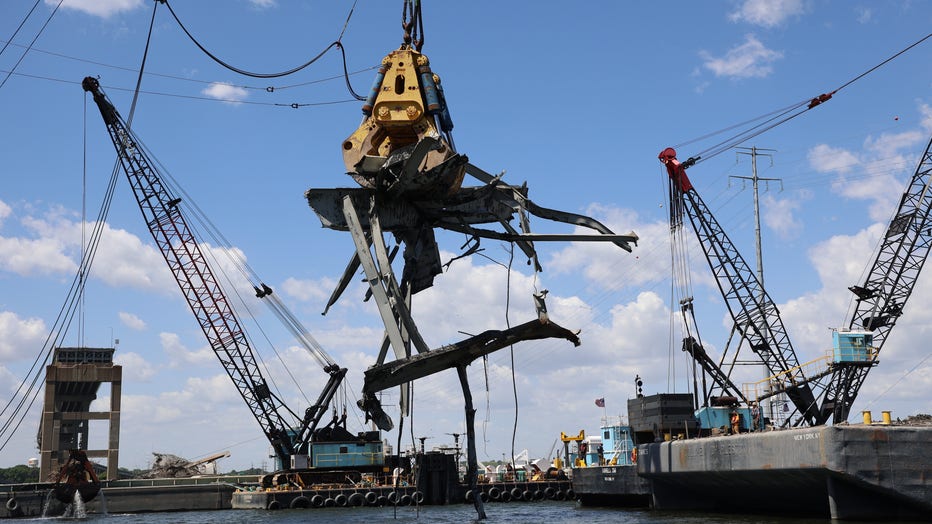Key Bridge collapse: Federal channel at Port of Baltimore restored
BALTIMORE, Md. - The U.S. Army Corps of Engineers and the U.S. Navy Supervisor of Salvage and Diving announced Monday that they have successfully restored the Fort McHenry Federal Channel to its original dimensions of 700 feet wide and 50 feet deep.

Key Bridge collapse: Federal channel at Port of Baltimore restored
The U.S. Army Corps of Engineers and the U.S. Navy Supervisor of Salvage and Diving announced Monday that they have successfully restored the Fort McHenry Federal Channel to its original dimensions of 700 feet wide and 50 feet deep.
This restoration comes after extensive efforts following the collapse of the Francis Scott Key Bridge.
Since the bridge collapse on March 26, the unified response team has worked tirelessly to clear the wreckage and remove the Dali cargo ship from the channel.
The final survey on June 10 certified the riverbed as safe for commercial maritime transit through the Port of Baltimore.
Initially, efforts were focused on clearing debris and creating a limited access channel, which allowed deep-draft commercial vessels to navigate through the port.
On May 20, the M/V Dali was moved, and the channel was widened to 400 feet, accommodating pre-collapse traffic. The fully restored channel now enables two-way traffic, removing previous safety restrictions.
"We are proud of the unified efforts that fully reopened the Federal Channel to port operations," said Lt. Gen. Scott Spellmon, commanding general of USACE. "The partnerships that endured through this response made this pivotal mission successful."
The restoration process involved removing approximately 50,000 tons of bridge wreckage from the Patapsco River.

The Chesapeake 1000 ("Chessy") floating crane equipped with "Gus" the hydraulic grabber, wrestle a 90-ton piece of residual wreckage Friday morning, June 7, 2024, from the Fort McHenry Federal Channel. Taking roughly 45 minutes to unfold, Chessy and
The Unified Command, comprising six primary agencies and 1,587 responders from 56 federal, state, and local agencies, led the operation.
Over 500 specialists from around the world contributed to the effort, utilizing a fleet of 18 barges, 22 tugboats, 13 floating cranes, 10 excavators, and four survey boats.
"We’ve cleared the Fort McHenry Federal Channel for safe transit. USACE will maintain this critical waterway as we have for the last 107 years," said Col. Estee Pinchasin, Baltimore District commander. "I cannot overstate how proud I am of our team. It was incredible seeing so many people from different parts of our government, from around our country and all over the world, come together in the Unified Command and accomplish so much in this amount of time."
Featured
Baltimore Key Bridge collapse: Work to restore Federal Channel expected to finish between June 8-10
Work to restore the Baltimore Harbor’s 700-foot wide and 50-foot-deep channel is projected to conclude between June 8 and 10.
The wreckage will be transported to Sparrows Point for processing, with ongoing work now part of routine maintenance to ensure future dredging operations are not impacted.
"Although the overarching goal to restore full operational capacity to the Federal Channel was successful, each day, we thought of those who lost their lives, their families, and the workers impacted by this tragic event," said Pinchasin. "Not a day went by that we didn’t think about all of them, and that kept us going."

Baltimore Key Bridge collapse: federal channel set to fully reopen June 8-10
The work to restore Baltimore's federal channel is now projected to wrap up between June 8-10.
The Unified Command said it prioritized public and responder safety, accountability for missing persons, environmental protection, incident stabilization, and the restoration of transportation infrastructure and commerce.



